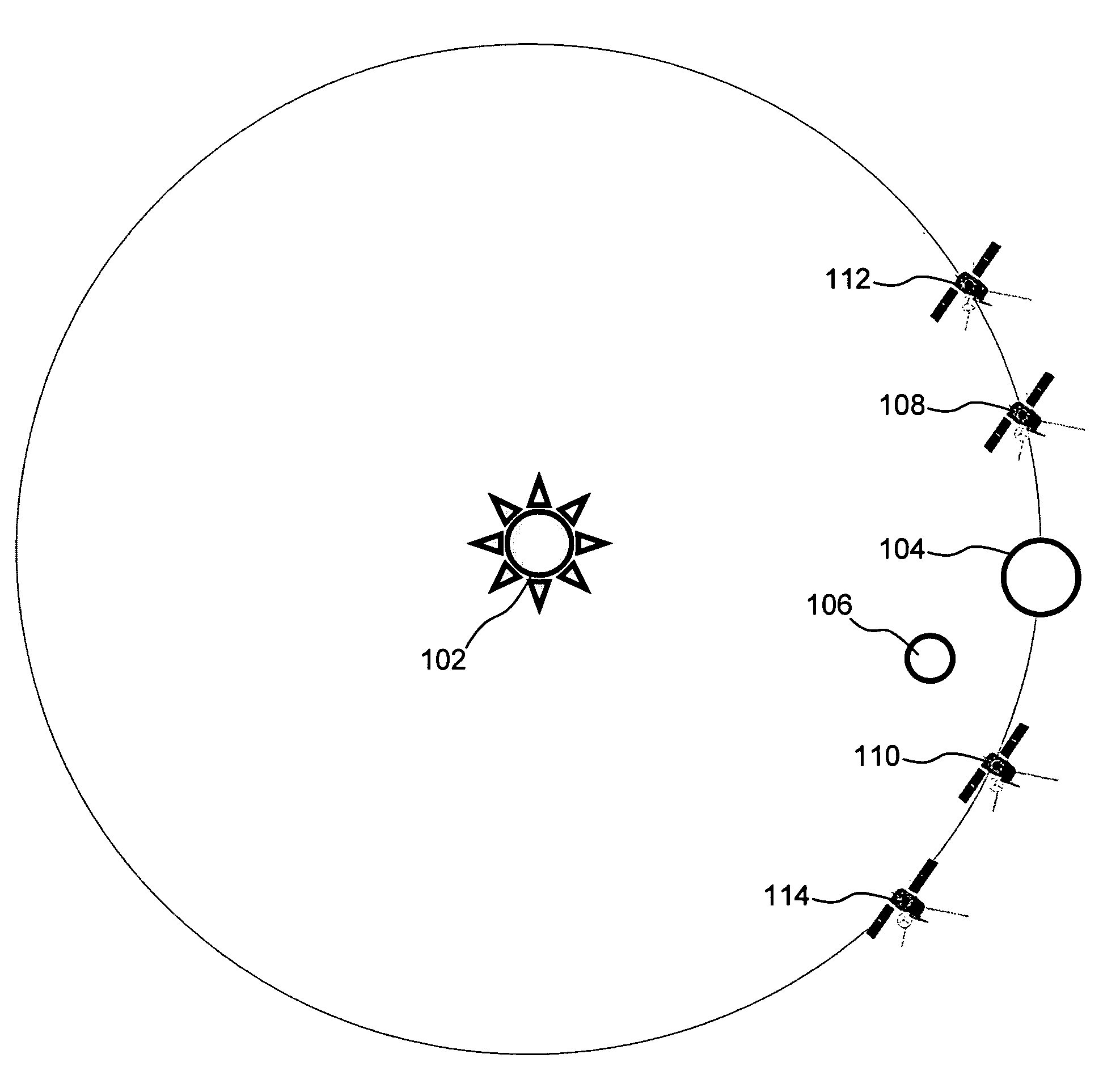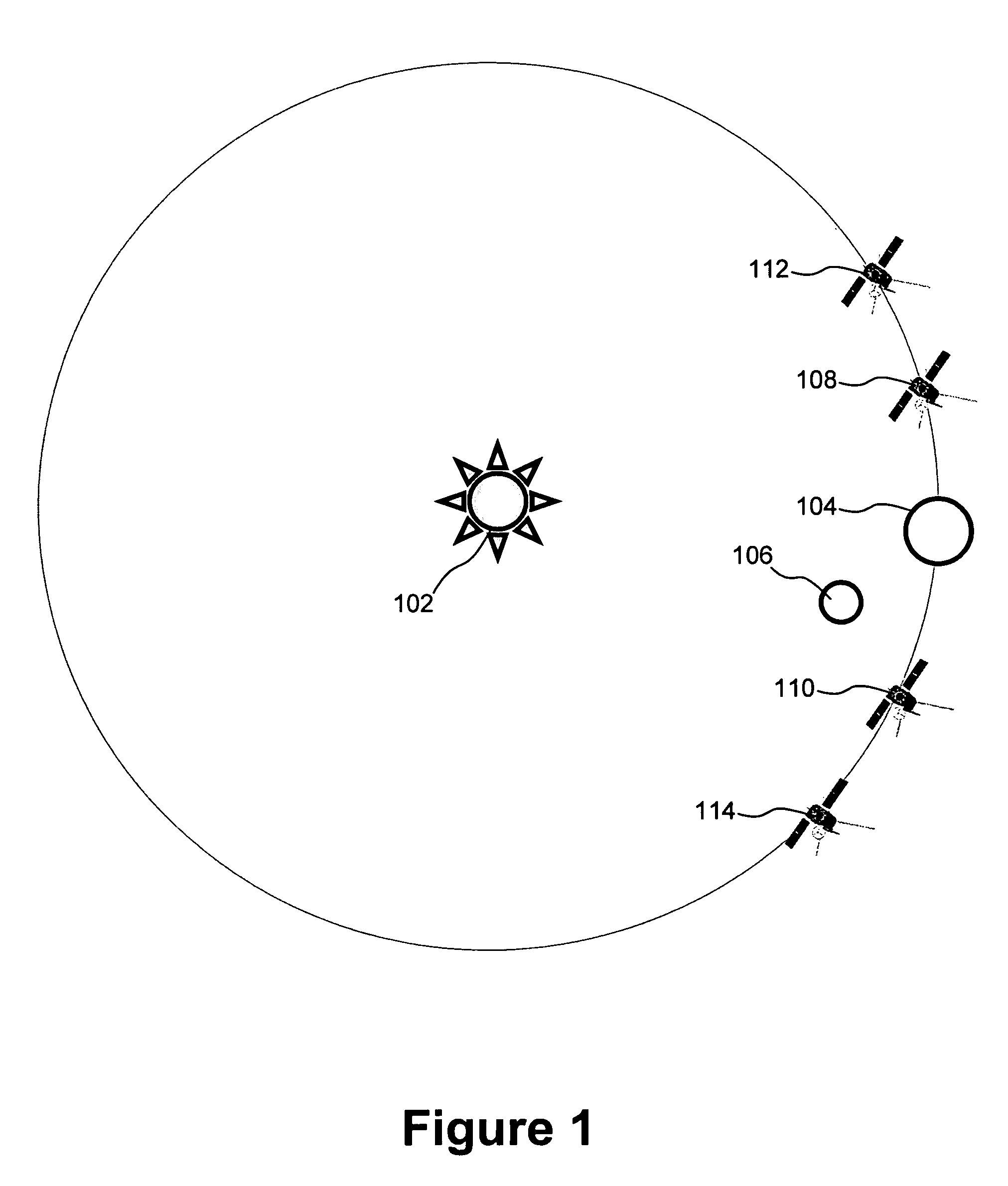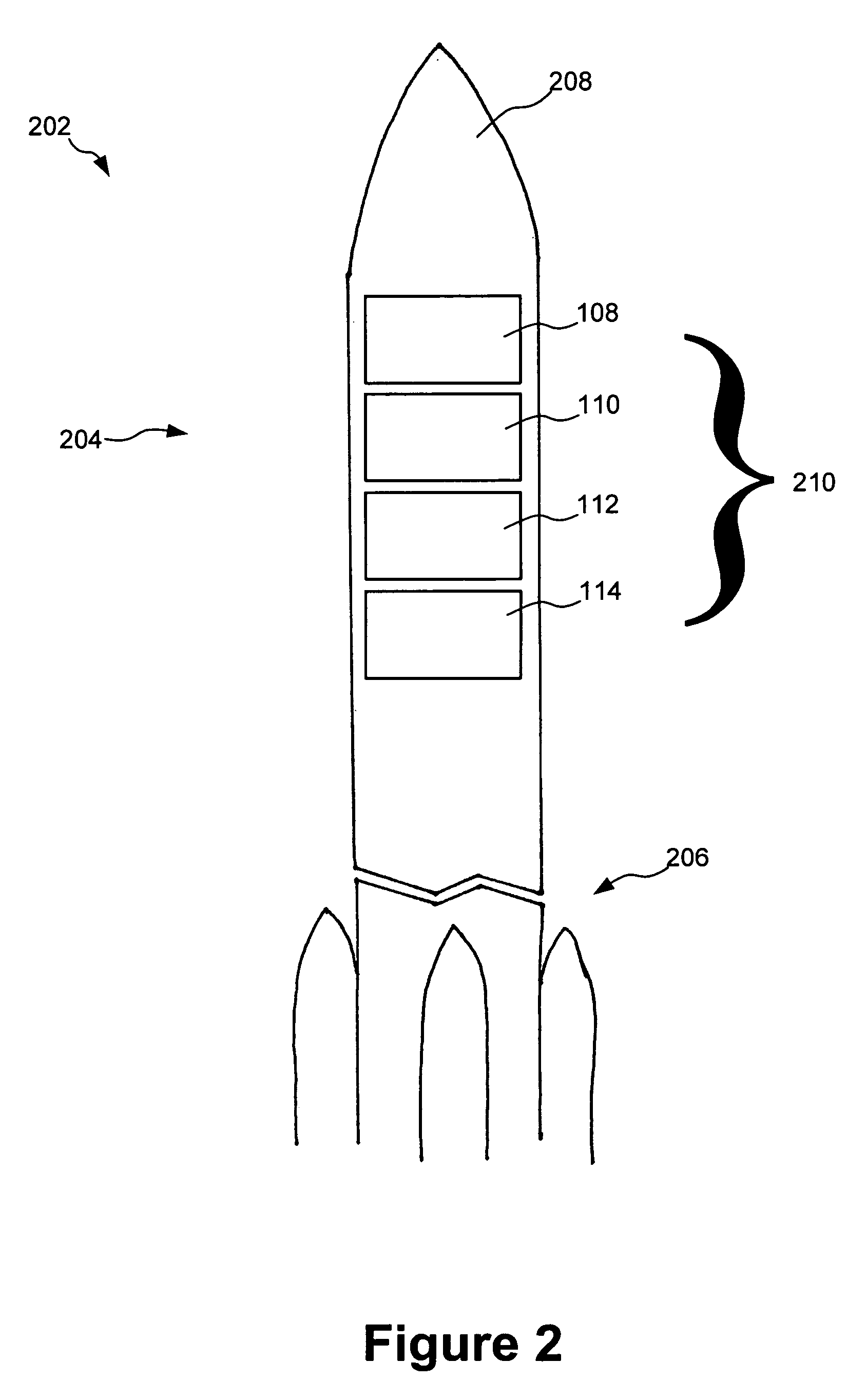Method for deploying multiple spacecraft
a technology for spacecraft and spacecraft, applied in the direction of cosmonautic vehicles, transportation and packaging, aircraft, etc., can solve the problem that none of these references disclose the concept of using lunar gravity assis
- Summary
- Abstract
- Description
- Claims
- Application Information
AI Technical Summary
Benefits of technology
Problems solved by technology
Method used
Image
Examples
Embodiment Construction
)
[0052]FIG. 1 is a schematic diagram of a preferred embodiment of a plurality of celestial bodies and a plurality of spacecraft. FIG. 1 includes first celestial body 102, second celestial body 104 and third celestial body 106. As shown in FIG. 1, second celestial body 104 orbits around first celestial body 102. Also, in this embodiment, third celestial body 106 is a natural satellite of second celestial body 104 and third celestial body 106 orbits or rotates about second celestial body 104.
[0053]FIG. 1 also includes a plurality of spacecraft, first spacecraft 108, second spacecraft 110, third spacecraft 112 and Nth spacecraft 114. Principles, features and teachings of the present invention can be applied to any number of spacecraft. For clarity and convenience, an Nth spacecraft 114 is used to denote any additional, multiple spacecraft. It can be observed in FIG. 1 that these spacecraft are disposed in an orbit about first celestial body 102. Principles of the present invention can ...
PUM
 Login to View More
Login to View More Abstract
Description
Claims
Application Information
 Login to View More
Login to View More - R&D
- Intellectual Property
- Life Sciences
- Materials
- Tech Scout
- Unparalleled Data Quality
- Higher Quality Content
- 60% Fewer Hallucinations
Browse by: Latest US Patents, China's latest patents, Technical Efficacy Thesaurus, Application Domain, Technology Topic, Popular Technical Reports.
© 2025 PatSnap. All rights reserved.Legal|Privacy policy|Modern Slavery Act Transparency Statement|Sitemap|About US| Contact US: help@patsnap.com



